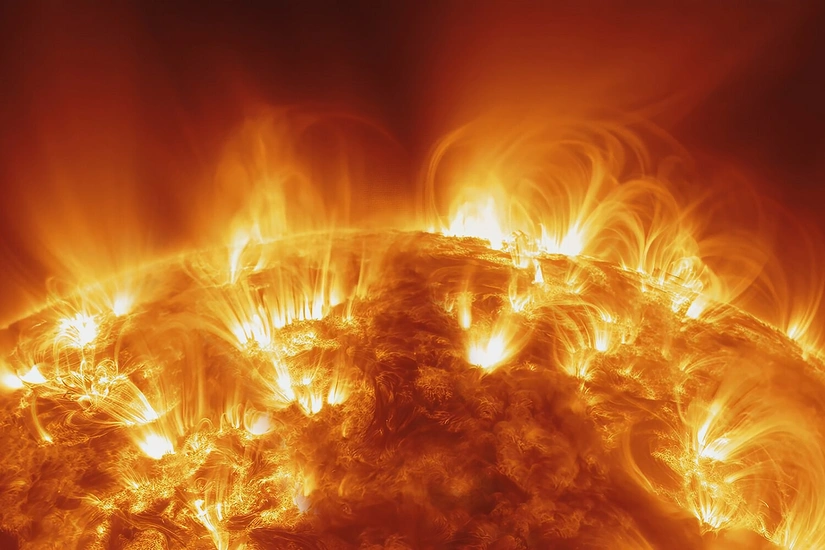Gigantic 'hole' appeared in sun enables unusually fast solar wind to race toward Earth
- 06 December, 2023
- 05:15

An enormous dark hole has opened up in the sun's surface and is spewing powerful streams of unusually fast radiation, known as solar wind, right at Earth, Report informs, citing Spaceweather.com.
The size and orientation of the temporary gap, which is wider than 60 Earths, is unprecedented at this stage of the solar cycle, scientists say.
The giant dark patch on the sun, known as a coronal hole, took shape near the sun's equator on December 2 and reached its maximum width of around 497,000 miles (800,000 kilometers) within 24 hours. Since December 4, the solar void has been pointing directly at Earth.
Experts initially predicted this most recent hole could spark a moderate (G2) geomagnetic storm, which could trigger radio blackouts and strong auroral displays for the next few days. However, the solar wind has been less intense than expected, so the resulting storm has only been weak (G1) so far, according to Spaceweather.com. But auroras are still possible at high latitudes.
It is unclear how long the hole will remain in the sun, but previous coronal holes have lasted for more than a single solar rotation (27 days) in the past, according to NOAA. However, the hole will soon rotate away from Earth.
Coronal holes occur when the magnetic fields that hold the sun in place suddenly open up, causing the contents of the sun's upper surface to stream away in the form of solar wind, according to the National Oceanic and Atmospheric Administration (NOAA). Coronal holes appear as dark patches because they are cooler and less dense than the surrounding plasma. This is similar to why sunspots appear to be black — but unlike sunspots, coronal holes are not visible unless they are viewed in ultraviolet light.
The radiation streams from coronal holes are much faster than normal solar wind and often trigger disturbances in Earth's magnetic shield, known as geomagnetic storms, according to NOAA. The last coronal hole to appear on the sun, which emerged in March, spat out the most powerful geomagnetic storm to hit Earth in more than six years.
Solar activity has been ramping up all year as the sun nears the explosive peak in its roughly 11-year solar cycle, known as the solar maximum. However, in a bizarre twist, the gigantic new coronal hole is not supposed to be part of this increase in solar activity.
